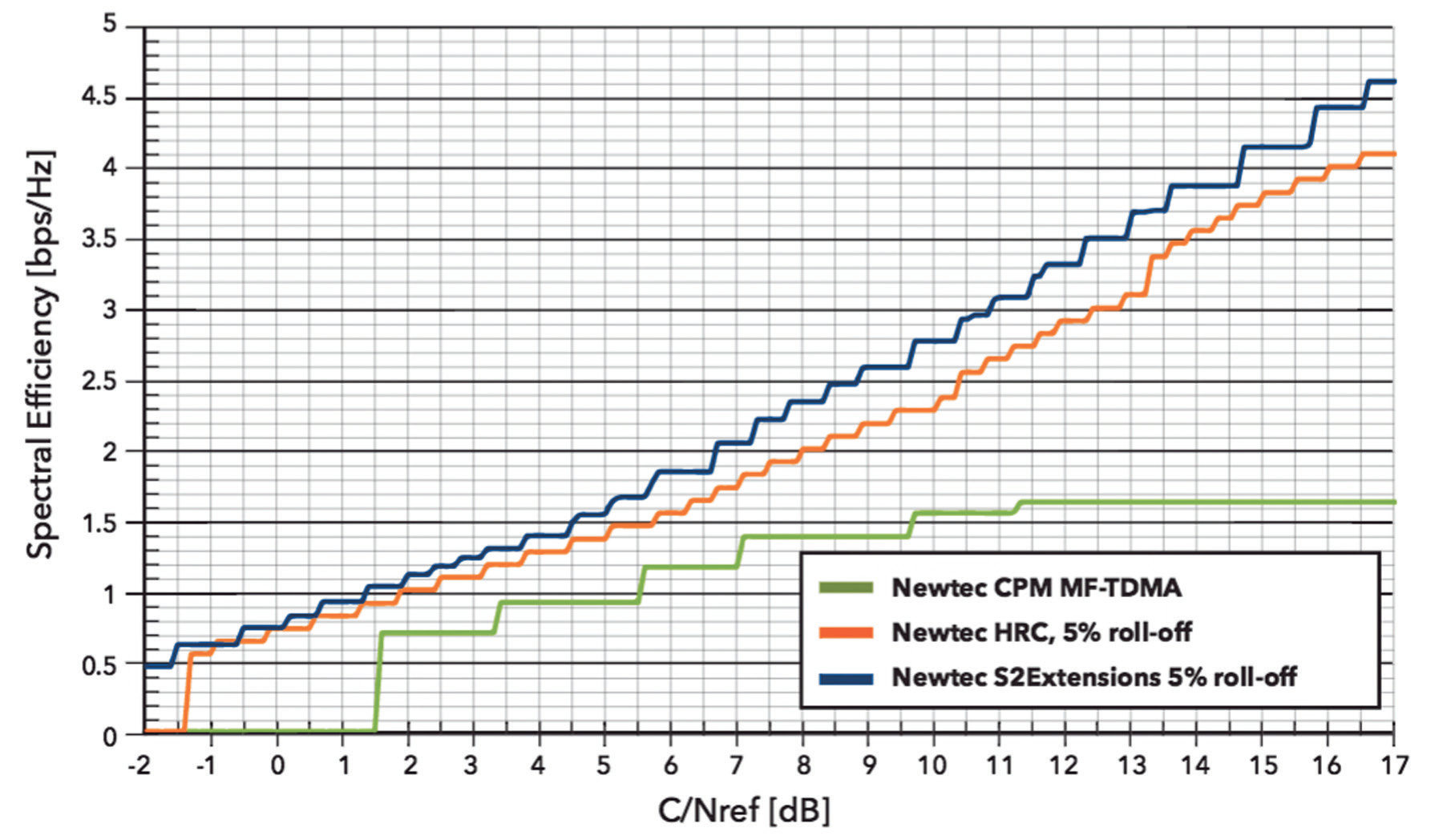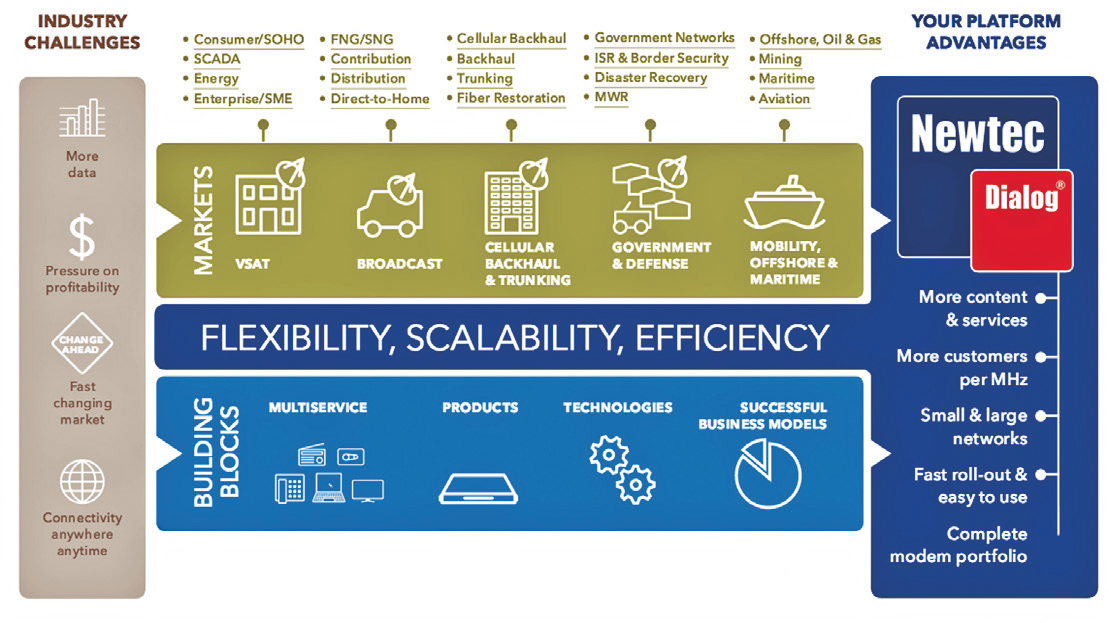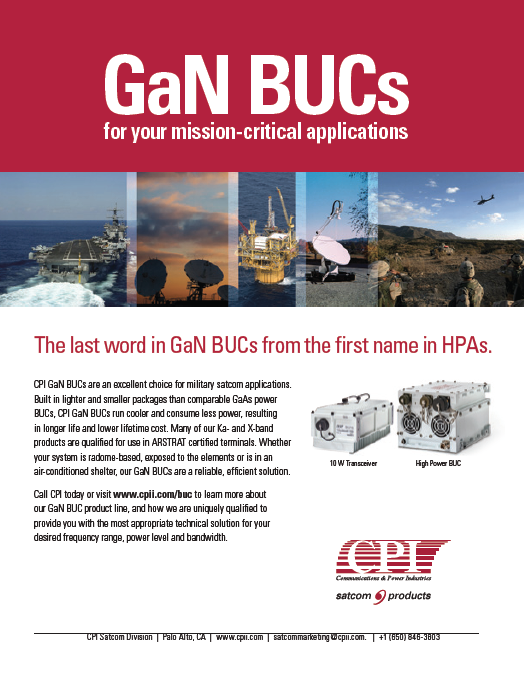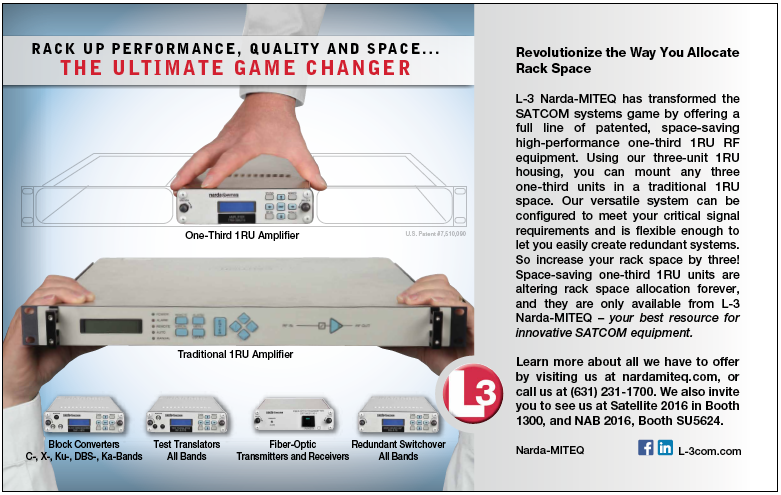Peacekeeping, conflict or crisis management missions operate in the most dangerous and difficult environments in the world.

SATCOMs Key Role In Peacekeeping Operations
Peacekeeping involves multiple nations, organizations and Non-Governmental Organizations (NGOs) that need to work together to resolve the crisis or conflict. The campaign can range from military intervention into a conflict to guiding the peace process, supporting elections and economic and social development. We also must not forget the coordination of the refugee flows caused by the conflict and provision appropriate humanitarian assistance.
The success of a peacekeeping, conflict or crisis management operation depends on multiple factors, such as the preparation of the operation, the strategy and the knowledge of the theatre and the local people. The intelligence gathered and the flexibility to adapt to the changes at hand is also crucial. Not only does the conflict need to be resolved, but the aftermath also needs to be addressed.
Communication plays a key role in the different stages, from conflict management to the guidance of local and regional parties through the political process towards peace. In the majority of the cases, the peacekeeping organizations, participating nations and NGOs need to rely on satellite communications due to the fact that the terrestrial communication networks are either destroyed, non-existent, insecure or unreliable.
The complexity of the peacekeeping operation is directly reflected in the complexity of the SATCOM network. Multiple applications (Intelligence, Surveillance and Reconnaissance (ISR), tactical, logistics, welfare, humanitarian, etc.) and services (video, voice, data) need to be addressed through the same network. Moreover multiple nations and international organizations may be involved. Depending on the stage of the operation, the mix of services and applications will change. Selecting the correct VSAT platform and technology is crucial for the success of the peacekeeping network deployment over satellite.
The VSAT platform will require the flexibility, scalability and efficiency to embrace the complexity of peacekeeping operations. The platform needs to be capable of regional or worldwide deployment, as well as the ability to offer a mix of applications and services, but it doesn’t stop there.
Current VSAT Technologies Are Not Always The Most Efficient
When deploying a VSAT platform for peacekeeping, conflict and crisis management operations, multiple elements need to be taken into account. The majority of the VSAT platforms are missing one or several of these key elements:
• First is spectral efficiency. Using dated waveforms and MODCODs will limit the amount of information that can be sent over satellite. Such information (or the lack of it) can be vital in making correct decisions, especially with bandwidth hungry applications such as ISR.
• The traffic going through the peacekeeping SATCOM networks can be quite diverse, ranging from bursty traffic with large variations in the instantaneous traffic flow to static constant flow traffic typical for video and voice communications. In most cases, aggregated video, data and voice traffic will be exchanged over satellite, which results in a variable traffic pattern. If the waveform is not able to adapt to the changing traffic patterns in an efficient way, the end-user loses a lot of bandwidth and throughput.
• Some VSAT technologies in the market will switch between SCPC and MF-TDMA or adapt their SCPC dynamically according to the traffic. However, if this operation is not seamless and buffering is required because the technology needs to tear down and pull up a carrier with every change in traffic, the risk of packet loss increases incrementally in more complex networks.

Comparison efficiency of 3 optional return link technologies (MF-TDMA, SCPC and Mx-DMA)
• Next to packet loss, poor service availability will result in the end-user missing out on mission critical data. With the large amount of HTS capacity that will be deployed worldwide, an adequate solution needs to be provided to match high availability services with high bandwidth efficiency. Fading effects due rain, interference, and shadowing can seriously hamper satellite communication. The control of the power is typically not fully automated, resulting in manual rain fade combating and the pain of interference as a consequence. This interference is not only affecting the service but is also the neighboring services.
• Finally from an operational perspective, capacity management and carrier planning is a manual and time-consuming process. Every change in the carrier plan can result in the need for technicians in the Network Operation Center or in the field to perform a configuration update. The installation of remote terminals should be quick and simple in order not to delay or block the peacekeeping operation.
To The Rescue
This is where the Newtec Dialog® Multiservice VSAT platform comes into the picture. The Newtec Dialog platform is a scalable and flexible multiservice satellite communications platform that allows operators and satellite service providers to build and adapt their networks easily as peacekeeping, conflict and crisis management operations change or grow. As such, Newtec Dialog gives them the power to offer a variety of on-the-move, on-the-pause and fixed services while making hassle-free decisions on which technology to use. A set of key technologies bolsters the high availability platform to offer highly reliable services at unsurpassed efficiencies. This addresses the continued pressure on the ever-increasing need for more data throughput.
• The Newtec Dialog platform supports three return access technologies from a single hub: MF-TDMA, SCPC and the Newtec’s unique Mx-DMA™ (Cross-Dimensional Multiple Access). Mx-DMA incorporates MF-TDMA flexibility and on-demand variable bandwidth allocation at SCPC efficiency.
• MF-TDMA satellite access technologies typically target applications with very bursty traffic patterns or very low data rate. This technology enables operators to share the bandwidth with a very high amount of users at the expense of the overhead of the TDMA scheme (guard times, synchronization overhead, etc.).
• SCPC on the other hand has more applicability in very high data rates and voice and fixed rate video return links ranging from 1 to 40 Mbaud. SCPC uses S2 Extensions to provide the highest efficiency, but has no means to share capacity or to overbook services.
• In between resides the majority of the peacekeeping, crisis and conflict management applications with low to medium overbooked services and important throughput rates up to 75 Mbps. This is where Newtec Mx-DMA return technology comes into the game.
Steps Toward Efficiency
The Newtec Mx-DMA return technology allows network operators to deploy anything between dedicated to low-to-medium overbooked services at any given time and at minimum space capacity cost. In technical terms, this translates into the fact that Newtec Mx-DMA cross-correlates and assigns in real-time. Return frequency plan, symbol rate, modulation, coding and power based on return traffic demand, QoS management and channel conditions are all adapted simultaneously for each terminal in the network. With each carrier assigned to just one terminal, highest return SCPC-like efficiencies are achieved while maintaining the flexibility of MF-TDMA

Overview of the Newtec Dialog Platform
The Newtec Mx-DMA return technology on the Newtec Dialog VSAT platform brings five main benefits to the table for peacekeeping, conflict and crisis management operations. These benefits will be explained in the following steps.
Step 1: Industry Leading Efficiency
Implementing Newtec Mx-DMA for peacekeeping, crisis and conflict management operations immediately results in important efficiency gains (30 to 50 percent) in satellite bandwidth, which can be exploited for different purposes:
• Provide double throughput through the same bandwidth
• Cut OPEX costs and reduce the gained bandwidth
• Groom the gained bandwidth towards other applications or end-users craving for bandwidth
• Increase the service availability of the link
• Optimize the User Experience of the end-user
The Newtec Mx-DMA return technology is based on optimal modulation techniques implemented in the Newtec High Resolution Coding (HRC™) waveform. The innovative next-generation waveform is typically applicable for low to medium rate applications between 32 kbps and 75 Mbps. HRC has an efficiency comparable to DVB-S2 with a 5% roll-off factor in order to get as many bits through the available bandwidth as possible.
In contrast to DVB-S2, the HRC coding also handles low throughput speeds in SCPC mode without the harmful latency effects that could hamper voice traffic or video streaming services. HRC optimizes low to medium rate traffic and avoids latency over satellite by using short block codes.
The high granularity of MODCOD choices (40 MODCODs from QPSK to 32APSK) provides the best modulation and coding per link. In combination with ACM (Adaptive Coding and Modulation) the most efficient mode is selected automatically depending on the available bandwidth and instant satellite link conditions.
Step 2: Seamless Real-Time Dynamic Bandwidth Allocation
As mentioned earlier in this article, a large set of applications within peacekeeping, crisis and conflict management applications today have varying traffic patterns over satellite. These patterns can be exploited by adapting the carrier plan on the fly based on the actual incoming traffic in the terminal. This not only creates higher efficiency over a group of terminals, but also allows service providers and operators to offer overbooked services based on a fine grained, but deterministic QoS model and priority schemes. As such, the flexibility of MF-TDMA can be maintained. It remains possible in Mx-DMA to allocate bandwidth on demand and in real-time without the typical MF-TDMA overhead.
Unlike other return technologies in the market, Newtec Mx-DMA’s carrier resizing based on incoming traffic is seamless with zero packet loss and almost no jitter. The Newtec Mx-DMA does not need a buffer to tear down and pull up a carrier with every change in traffic.
When resizing the carrier, two considerations need to be taken into account. Firstly, the operator should not experience a hit whilst carriers are resizing. Secondly, the resizing of the carrier should not impact other users on the same satellite transponder. In a network with five return carriers for example, three out of the five carriers could require to grow due to changing incoming traffic rate.
In case of traditional SCPC system, these resizing carriers cannot be shifted without traffic impact. Increasing the size of a carrier without impacting the other terminals will result in fragmentation of the carriers over the used capacity. In Mx-DMA, the complete carrier plan for all terminals is updated seamlessly. This keeps the used capacity to a minimum without any fragmentation of the carriers.
Benefit 3: Highest Availability @ Minimal Cost
Keeping the satellite link alive and maintaining maximum service availability for mission critical communications is imperative for peacekeeping, conflict and crisis management operations. The availability of such a service is defined by the capabilities of the technology to handle certain amount of fading effects such as rain, interference and shadowing effects.
Traditional VSAT networks will either take a big rain margin per return carrier to compensate for the fading effects or will use different MODCODs in Adaptive Modulation and Coding (ACM) to accommodate an operational link under fading conditions in the return channel. In Newtec Mx-DMA, different technologies go hand in hand to assure the maximal service availability.
• First, Newtec FlexACM operates alongside adapting MODCODs to compensate for fading effects. Moreover FlexACM also considers noise and distortion effects and small variations (scintillation effects etc.) in order to be as close to the zero margin level as possible and use the maximum available bandwidth under fading effects.
• In case of a deep fading effect beyond the minimal MODCOD, Newtec Mx-DMA will automatically adjust the symbol rate to keep the connectivity.
• Finally, instead of considering a rain margin for every single carrier, Newtec Mx-DMA will implement a rain margin for the total population of terminals and satellite carriers through statistical multiplexing, which provides additional gains on top of other Newtec Mx-DMA efficiency technologies. In case of a fading effect at a remote site both symbol rate and center frequency will dynamically be adjusted and consume some of the statistical multiplexed margin. As such, fixed bitrate service such as video and voice can be maintained.
Benefit 4: Optimized SWaP-C For Remote SATCOM Terminals
Some of the primary concerns for peacekeeping, conflict and crisis management operations are size, weight, power and cost (SWaP-C). Newtec modems running Mx-DMA return technology represent a significant step towards improving these characteristics.
As these terminals need to be transported and sometimes carried to the conflict areas, the SWaP (size, weight and power) become increasingly important to support the flexibility and the mobility of these operations. How does Newtec Mx-DMA solve the SWaP-C question?
Through the Newtec Mx-DMA technology, important efficiency gains between 30 to 50 percent can be made depending on the network configuration and legacy VSAT technology. This basically means that,with smaller terminals, higher throughputs can be achieved. Smaller terminals also require less power, are lighter and are less costly.
On top of that, Newtec Mx-DMA implements automatic uplink power and regrowth control for the Newtec terminals. The output power of the terminal is constantly monitored by the Newtec Dialog hub and adapted depending on the link condition and the carrier size. During a fading effect, end-users typically crank up the power to the maximum output level. Through that operation, this also increases the spectral regrowth.
By managing the power and measuring the regrowth automatically, the output back-off (OBO) can be reduced during fading conditions. As such, more power (up to 3dB) can be obtained out of the same BUC. This reduces the need for a more powerful or expensive BUC and more throughput can be achieved at the same time.
Benefit 5: Unmatched Operational Efficiency
Peacekeeping, conflict and crisis management operations continuously pursue the improvement of their operational efficiency. Every element that increases the operational efficiency provides an extra step towards a successful operation. Newtec Mx-DMA contribution towards operational efficiency is achieved both at the Network Operation Center (NOC) as well as in theater through the Newtec terminals.
Instead of engaging into a manual and time consuming capacity management and carrier planning workflow as in SCPC and MF-TDMA networks—where for every change in the carrier plan a human interaction is required—Newtec Mx-DMA automates the process. The start frequency and stop frequency are determined at the initial carrier planning phase.
Within that bandwidth envelope, the different carriers will be brought up via the Newtec Dialog Hub. From there Newtec Mx-DMA takes over. Every change in incoming traffic or link conditions will be automatically managed. No human intervention is required anymore at the NOC, except for monitoring and control.
In peacekeeping, conflict and crisis management operations it is up to the deployed personnel (often possessing only basic IT skills) to install the VSATs. To help these people to quickly set-up a satellite link, Newtec provides both a Point&Play® tool and auto-commission services. The quicker the terminal is up and running, the quicker the deployed personnel can focus on their core operational tasks.
The Point&Play tool provided with the Newtec Dialog VSAT terminals allows the installer (be it a professional installer or the end-user) to easily position the antenna correctly by identifying the satellite and providing feedback on both signal quality and lock. Once the VSAT terminal is in lock, it will be auto-commissioned by the Newtec Dialog hub and monitoring can start.
The carrier belonging to the terminal will automatically be added to the network and the automated Newtec Mx-DMA will do the rest. The terminal certification is an automated process verifying the installation quality: pointing accuracy and cross polarization discrimination. This process assures that each terminal works at maximum efficiency reduces the interference risk.
VSAT technology needs to embrace the complexity of peacekeeping, conflict and crisis management networks over satellite. The efficiency of these operations are directly linked to the efficiency of the VSAT platform. Firstly you need a multiservice VSAT solution such as Newtec Dialog platform that allows operators and satellite service providers to build and adapt their networks easily as peacekeeping, conflict and crisis management operations change or grow. Moreover you need the technology to provide flexible and efficient services.
The Mx-DMA return technology that runs on the Newtec Dialog platform brings 5 main benefits for the service providers and operators involved in peacekeeping, conflict and crisis management networks over satellite. Spectral efficiency and dynamic bandwidth allocation go hand in hand in the Newtec Mx-DMA technology and immediately result in important bandwidth and throughput gains up to 50% at the highest service availability.
In case of variable traffic over the network, the Mx-DMA technology will automatically resize the carriers in a seamless way without packet drop or interfering with neighboring carriers. In order to answer the stringent SWaP-C demands, Newtec Mx-DMA allows for smaller terminals and BUCs in the network to improve the transportability, mobility and affordability. Finally, carrier planning and capacity management is fully automated to reduce human intervention and improve the operational efficiency at both the NOC and the remote site.
newtec.eu/

Koen Willems started his career in 1998 with Lernout&Hauspie as a project manager in the Consulting & Services division. More recently, he joined Toshiba as a Product Marketing Manager for the Benelux and, later, for the European market. In a total of 6 years, Koen contributed to all of the major Toshiba Retail IT product releases. Mr. Willems is, currently the Market Director for Government and Defense for Newtec, a Belgium-based specialist in satellite communications. Koen holds a degree in Germanic Languages (University Ghent, Belgium, 1997) and completed a Masters degree in Marketing Management program at the Vlekho Business School in Brussels (1998). He acquires a Six Sigma Black Belt for product development and process improvement in 2006.



